How does knowledge architecture help with automating customer interactions?
Automating routine interactions can provide consistency, speed, and lower costs for customer support. Increasingly it is also allowing organizations to support more sophisticated interactions. But these depend on having not only the right processes in place to accomplish the required task, but also having the right knowledge readily at hand for automated systems to recognize and retrieve.
WATCH: Knowledge Architecture - The Path To Automating Customer Support Interactions
Challenges of developing bots
Automating contact center interactions involves the development of digital assistants and chatbots to support conversational interactions by either text or voice. The goal is to improve customer service while reducing costs or these interactions. However, this is challenging because the current approaches of many bot vendors are not efficient. Training bots is costly and their performance is limited. For example, they often cannot handle a full interaction with the customer; they usually need human intervention.
Remember: Chatbots are a channel – to data, content and knowledge - not a replacement for human reasoning.
One of the reasons for the high costs of automation is people think that setting up a bot requires that an organization re-create all its content and reinvent their processes. Sometimes they'll add organizational structures such as “AI content group” just for automated content, which can really be a showstopper. “Many organizations end up creating new AI functions or groups to specifically develop content for cognitive applications, but really this should be part of existing content operations, not something new. The approaches to content have to be different but the core function is really the same. Content operations need to be evolved to for new AI-powered systems, but this needs to be an extension of enterprise-wide content operations” according to Seth.
Structured knowledge components can be used to improve performance and designing these architectures in a focused way can power intelligent assistants and bots for very precise information retrieval. A decade ago, EIS developed one of the first digital assistants on the market. It was tremendously successful, leveraged component content and now the industry is coming around to this approach for powering so called “cognitive” assistants and applications. Highly functional digital assistants need to be trained with high value and well curated knowledge artifacts and have a flexible, extensible knowledge architecture. That's frequently the piece that's missing, and it is needed in order to develop bots efficiently.
Bots: Friend or foe?
When properly implemented, automated systems such as chatbots can save time and money, and improve customer service. The numbers are impressive.
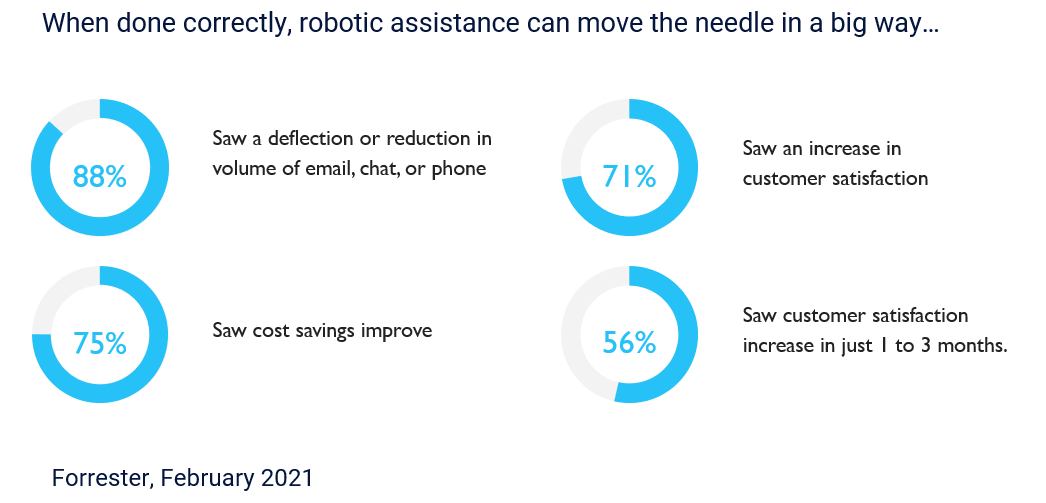
But when customers get frustrated, the impact on a brand can be strongly negative, both for customers and call center reps who are trying to help customers.
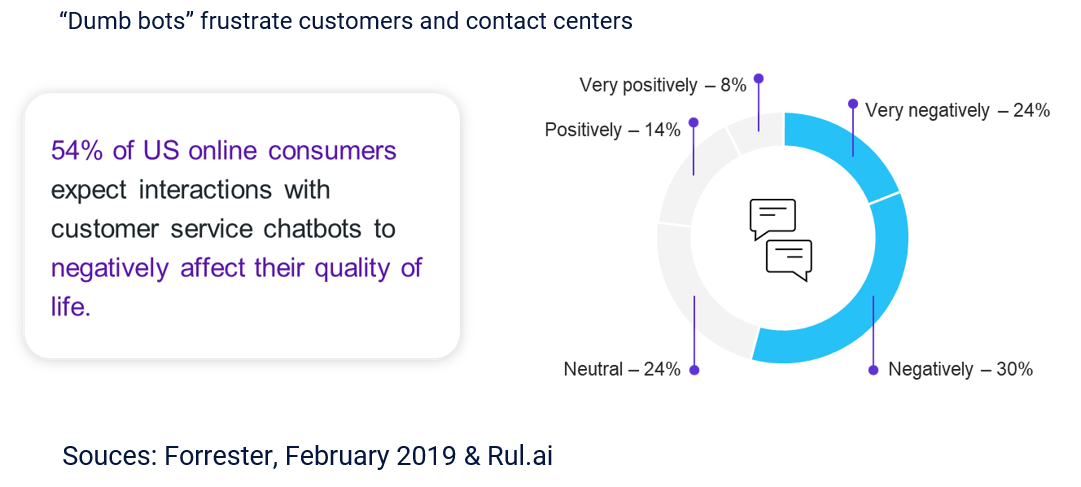
Demographic preferences further fuel the trend toward automated customer service. One recent study indicated that 72% of Millennials believe that a phone call is not a good way to obtain customer support. They want online experiences and accomplish their tasks through chat.
Finding the answers
In the past, the user manual was the default source of answers. But the advice to “read the manual,” has long been discarded. Manuals are not well written – or written with the needs of specific users in mind. People don’t have time. A semantic or keyword search can help zero in on a more specific location in a document, but again, that will not necessarily get the person to the answer.
The problem is that many times, knowing the context of the situation is required for any system to find needed information. The relevant information might be in a CRM system or an ERP system, depending on the user’s role or the customer’s needs. Information from a manual cannot just be presented but has to be integrated with information based on the scenario at hand, such as whether the customer is a new one or an existing one, is technical or non-technical, or what specific equipment and configuration is present in their environment. To do this, knowledge bots must be built in a way that embeds human, judgment, knowledge and intelligence into the system to provide situational context.
Without a knowledge structure, bots will be brittle. They will not be able to interpret the user, and they won't perform very well. The content needs to be componentized to allow the bots to find the answers that customers need.
Reusable components are essential
It’s important to consider the expected uses of content when making decisions about how to break it down. It should be broken into content in the form of reusable pieces that reflect typical cases for the organization, Seth advised. For example, if translation and localization are part of what an organization needs, it should not have to be done again completely if only a small piece of the content changes. The content should be designed so only the changed information is replaced. That is where componentizing is usually leveraged.
Another example is an insurance company that has a 300 page policy document. If a customer wants to know what is covered and what is not, those facts should be broken out so they can be accessed individually. Then if question answering systems are built, the same structure and the same reusable components can be ingested into these intelligent applications. This reduces the time to train the AI or cognitive application. It helps leverage the existing organizational structures, boundaries, and processes, and it also lowers internal training costs.
Breaking down the content
Once content is broken down to the right level of detail, it can be used for multiple purposes.
Transforming Content For Multiple Cognitive Channels
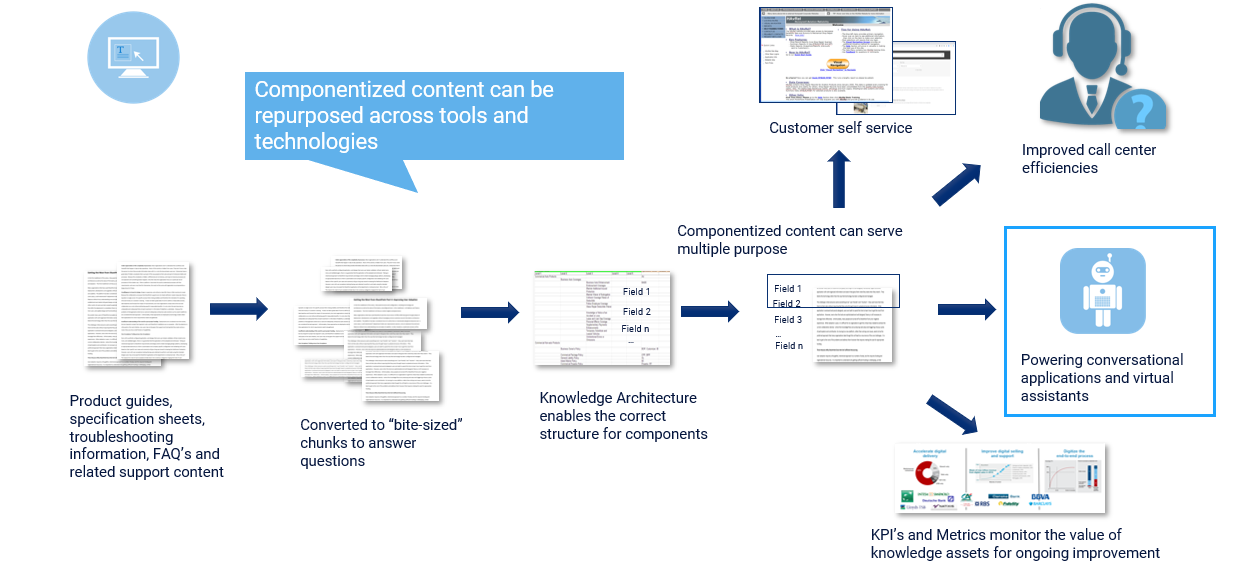
Knowledge architecture is the way to apply the correct structure to those components. Then that content can serve multiple purposes, including customer self-service, chatbots and conversational access to information which will lead to improved access to knowledge for customer facing access and internal knowledge management. But it has to be done right. An inflexible or poorly aligned self-service knowledge architecture (based on user needs) will not reduce calls to customer support. Content analytics can help find the missing pieces so that users will have a high quality experience regardless of their role or context.
Converting documentation into conversational flow
Content generated in PDF or word processing documents can be put into short segments so that a customer can follow step-by-step instructions, pausing or rewinding to review the steps, as Henry describes here.
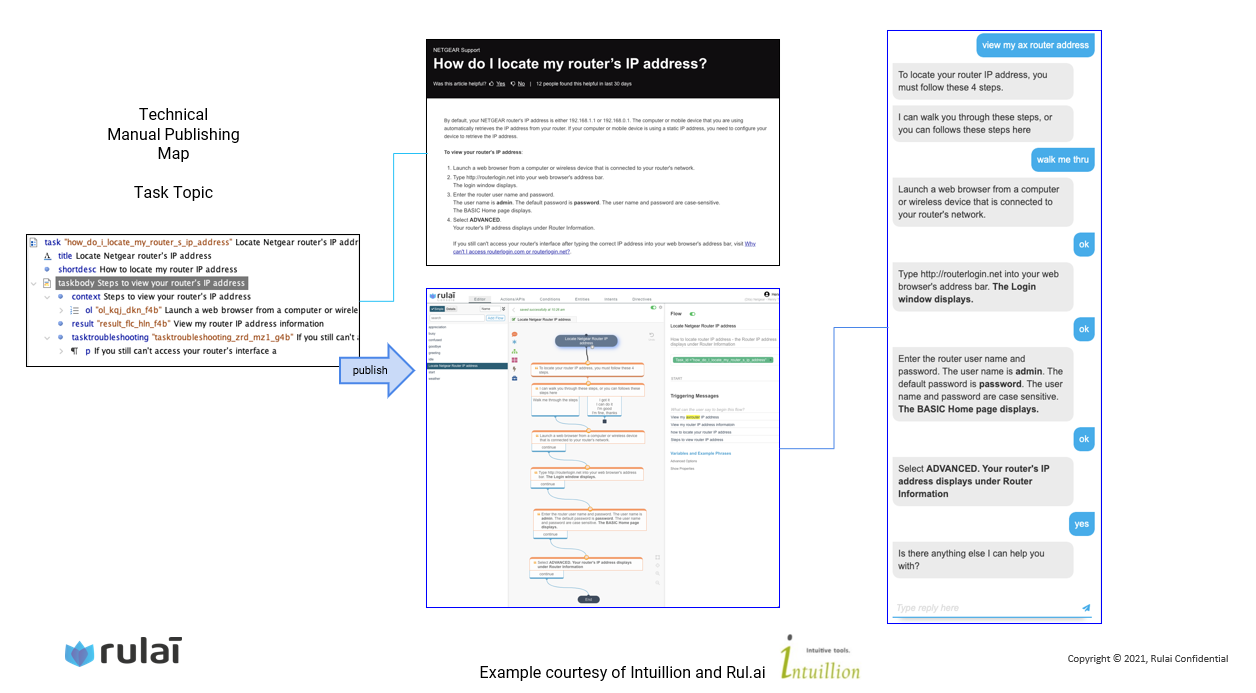
The same content can be used for self-service or for assisting a customer service representative in talking though a process with a customer either on the phone or by sharing a screen.
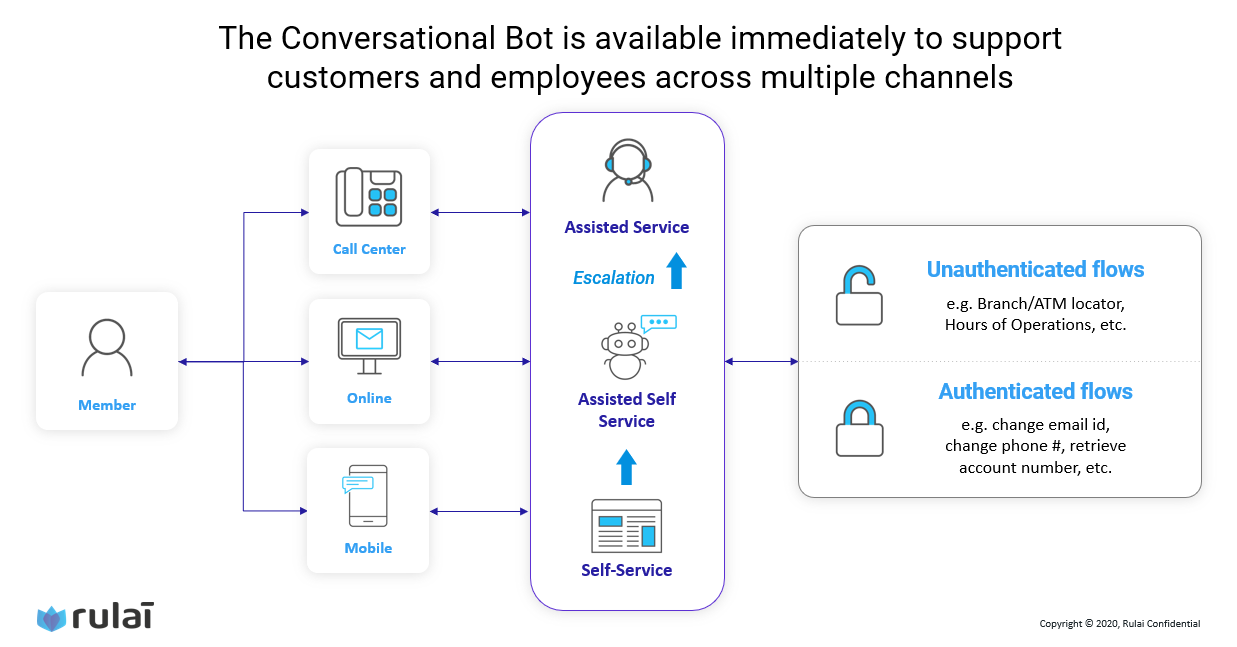
Accelerators for bot development
Products are now available for accelerating bot development so that the process does not have to be done manually. The Rulai enterprise conversational computing platform is one such product.
In the clip below is a demo that shows how easily the platform can generate a bot conversation. In this case, it can parse PDF content or imports componentized content (using DITA or another content architecture) generate reference flows and path flows.
”What's different now is the ability to very precisely answer questions, based on the knowledge architecture, but also the mechanisms for processing content through imports and generating flows automatically rather than building them one-by-one manually. They still need some tweaking but this is a really great step forward for bots” according to Seth.
Where to start
Information architecture overall can be quite complex, and that can be daunting, but start by taking a subset of enterprise content, and build out a knowledge architecture that is very contextualized and specific to the problems that you're trying to solve. Look for routine, high frequency topics and build those use cases before starting to look at the complex ones. Make the information readily available, which will help whether the bot is simple transaction support or a bot that is helping a human do a job. Building a helper bot is a good approach so that you can test it before releasing it into the wild. The customer service representative can use it as an aid as it is tested and fine-tuned without leaving the customer stranded if the bot does not end up being responsive to the question. This becomes an opportunity to build greater functionality through ongoing learning.
The content of this blog is a summary of the discussion between Henry Truong, VP, Enterprise Solutions at Rul.ai, and Seth Earley, CEO of Earley Information Science during a webinar, Knowledge Architecture - The Path to Automating Customer Support Interactions.

